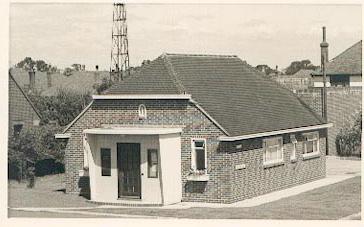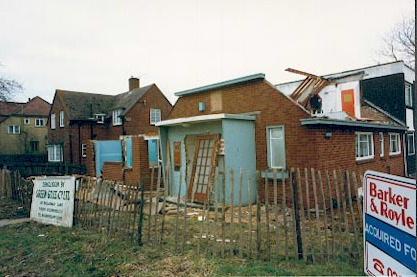The practice originated in the Victorian Bodley Scott practice.
Samuel King Scott MD of Brighton (1818-1865) had 14 children of which the third, Thomas Bodley Scott (1851-1924) qualified in 1874 and set up practice in Poole Road, Bournemouth. He became Mayor of Bournemouth in 1924 and died that year. T.B.Scott had 11 children of which the second, Maitland Bodley Scott, qualified in 1901 and entered general practice in Poole Road. His son Ronald Bodley Scott, after a short period in general practice with his father, was called back to Barts and eventually became the Queen's physician and was knighted. T.B.Scott's ninth child, Arthur Bodley Scott, qualified in 1908 and became a General Practitioner at 91 Wimborne Road. The Winton Health Centre derives from this practice.
Samuel King Scott's ninth child, Bernard Scott qualified in 1881 and set up practice at "Shiplake" in the Poole Road. Eventually Bernard set up Stagsden Nursing Home on West Cliff Road, and moved into the handsome cliff top house, Fair Lea next door. He had 10 children of which the eldest, Maitland, qualified from Guys in 1912.and joined his father in practice. About 1930 Maitland's sister Elisabeth, architect of the Shakespeare Memorial Theatre at Stratford on Avon, built the very comfortable Avon House (16a West Cliff Road) for him in the kitchen garden of Fair Lea.
Maitland practised from Avon House until his sudden death in 1942. Stuart Robertson, qualified from Glasgow and gaining an M.C. in the First War, had been a General Practitioner in Margate. In 1940 Margate was evacuated. Grass grew in the streets and Stuart had no patients and no income. So he moved to Bournemouth . He had hoped that his brother Frank Morton Robertson, (whose practice at 199 Holdenhurst Road still exists) would take him into partnership or at least find him some work. Frank (Graham's father) would do neither. So Stuart rented a house in Talbot Woods and gathered whatever patients he could as a single handed practitioner. When Maitland Scott died so unexpectedly a number of his patients asked Stuart to look after them. Maitland's widow suggested Stuart should buy the practice. Stuart replied that he had got a practice of his own already, but would like the chance to buy Avon House.
So Stuart Robertson moved into Avon House in 1943 and became the de facto (if not the de jure) successor of the Scott practice. When James Fisher bought a third share of Stuart's practice in June 1948 for £2000 there were none of the original Scott medical dynasty practising in the town.
James Fisher joined Stuart in mid-June 1948. It was an entirely private practice, and there had never been an Insurance (or "Panel") element in it. On July 5th 1948 the NHS began to function. Bournemouth became a "closed area" and no new doctors were admitted to the list of the Bournemouth Executive Council for the next six years.
On the evening of July 5th the Clerk to the Executive Council ( Mr Lowe) told James Fisher that Dr C.T.Hawkins of 125 Castle Lane had had a turn of some kind the previous evening and his wife had dumped some 1000 medical cards on his desk that morning saying "He can't go on". There was no mechanism by which this practice could be transferred to James Fisher so Lowe suggested he find rooms. For legal reasons at this stage it would not have been possible to use Dr Hawkins' consulting rooms at that stage. He got the use of a dentist's consulting room in Redbreast Road, then practised in the front room of 8 Petit Road (patients sat on the stairs to wait). Finally he bought 125 Castle Lane (now opposite the BP garage) and got married in July 1950.
In 1953 Graham Robertson joined James Fisher. Graham had been born in what is now the practice manager's office at 199 Holdenhurst Road surgery. After qualifying at Oxford and doing his National Service he did an assistantship in Port Talbot. In 1954 they opened Bournemouth's first purpose built practice centre at 85 Castle Lane. As the work was principally visiting they could comfortably share one consulting room. although there was a small additional consulting room in the building. The radiotelephone mast caused adverse comment from older practitioners; it even got as far as the ethical committee.

In the later fifties both John and David Granger joined the practice. Their father Douglas Granger (1890-1961), and their uncle, Henry Granger (1882-1960), had been part of a loose co-operative which was in effect the most influential and successful medical grouping in Bournemouth between the wars. It included B.E.Tompson a consultant physician and Dr Blunt an anaesthetist.
After the Second War it was joined by Don Horrocks, Roger Barker just out of the Navy and by Basil Furness. It was never a true partnership and did not survive the organisational changes imposed by the NHS in 1948. In its time it was so influential that when a vacancy for an Honorary Physician to the Royal Victoria and West Hants Hospital occurred in the thirties they convinced the Committee that “there were far too many Scotts in the town already” and so their candidate Bertram Tompson was preferred to Ronald Bodley Scott (eventually Sir Ronald Bodley Scott, Physician to the Queen).
John Granger (BM BCh Oxon 1951) had been at Oxford with Graham Robertson so was a natural choice as a partner. He joined the practice in 1957 when he had finished his National Service in the RAF.
David Granger, (MB BS St Thomas’1952) had been working with his father and Don Horrocks since 1955, He joined the practice as a partner in 1959.
In the 1960's major expansion in Westbourne occurred as many of the large blocks of flats were built and Isobel Jack joined the combined practice, but later elected to work exclusively at the Castle Lane surgery as the practice expanded. In 1966 the practice grew from 10,000 to 12,000 patients. With the rapidly increasing practice size the Westbourne and Castle Lane sites of the practice separated in 1967 with James Fisher, Graham Robertson and Isobel Jack working from 85 Castle Lane and the Westbourne surgery later becoming the Westbourne Medical Centre.

In the 1960s the practice became one of the first training practices for GPs and Duncan Gee was one of the first GP trainees. He later went on to join as a partner in 1971, followed, in 1977, by Stephen Thomas who had also been one of James Fisher's trainees . Ann Gee joined as a part time partner in 1981 followed by the doctors who are now in the practice.
The Castle Lane Surgery was partially demolished and converted to an estate agent and phone shop when the practice moved to it's present location in Tolpuddle Gardens in 1986.